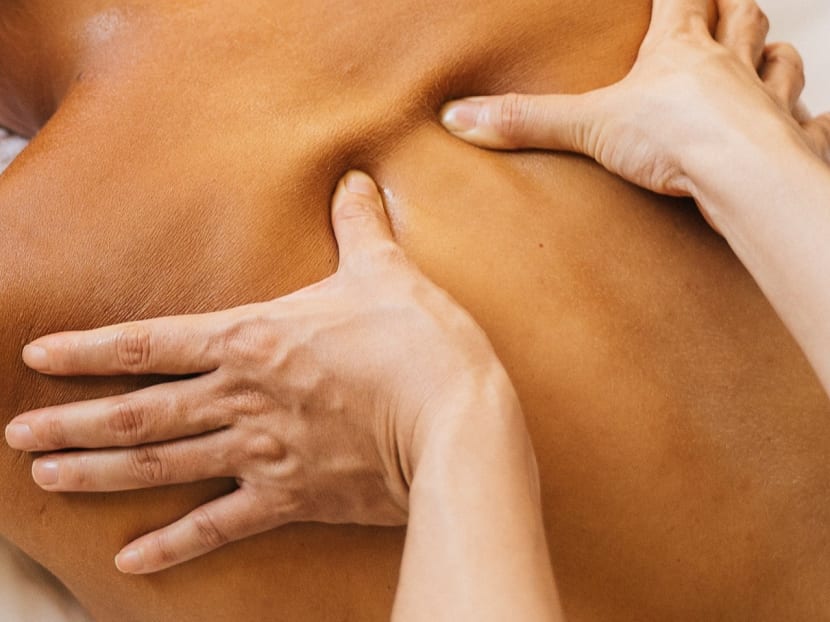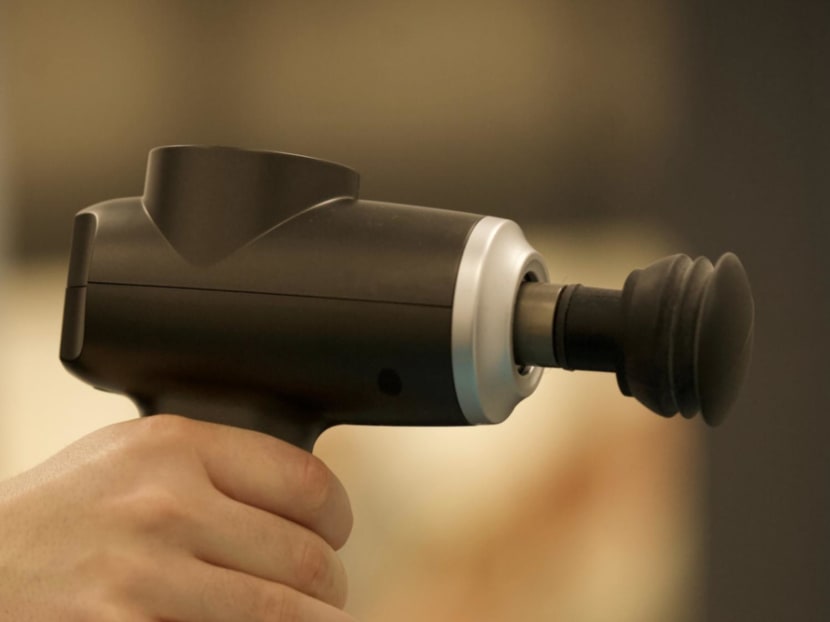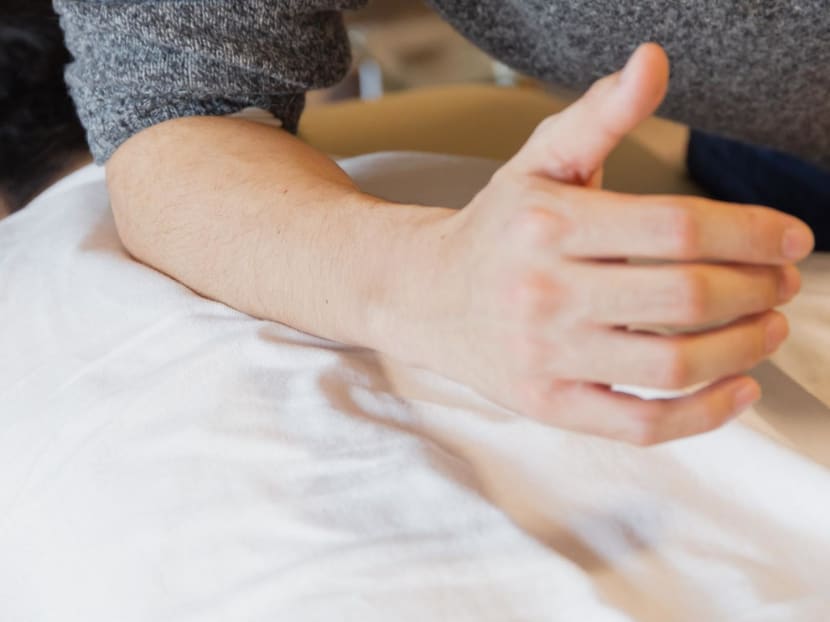When massages become harmful: Here's what you need to know
SINGAPORE — It is no secret that people in Singapore love a good massage, judging by the numerous massage places around. To some, it is a panacea for aches and pains, tensed muscles or other stress-induced problems. However, a massage can sometimes go wrong and cause bad side effects.

- Although massages are generally safe, things can go wrong under untrained hands
- In one case, a man with neck pain lost sensation in his arm for six months after a massage mishap
- Rhabdomyolysis — muscle breakdown — is a potentially life-threatening complication that has been reported after deep tissue massages
- Experts gave advice on when to skip a massage and how to look out for symptoms that may warrant medical attention
SINGAPORE — It is no secret that people in Singapore love a good massage, judging by the numerous massage places around. To some, it is a panacea for aches and pains, tensed muscles or other stress-induced problems.
However, a massage can sometimes go wrong and cause bad side effects. This is especially when it is done incorrectly, excessively or too vigorously by untrained hands.
Senior physiotherapist Xu Weijie from Core Concepts, a private physiotherapy clinic group, said that when done properly, a massage can induce a relaxation effect, which is why some people go for a massage to unwind.
Dr Jade Chee from the department of orthopaedic surgery at National University Hospital (NUH) said that massages are generally safe and have proven benefits in patients with musculoskeletal pain (referring to pain that affects bones, muscles, ligaments or tendons).
She added that in physiotherapy practices, massage therapy is a recognised part of the management of musculoskeletal conditions and it is often prescribed with exercise therapy. Dr Chee is the sports medicine registrar with the division of sports, shoulder and elbow surgery at the NUH department.
On some occasions, though, massages can do more harm than good.
This was what happened to a patient, who was referred to Core Concepts for rehabilitation after a massage mishap.
The man, who was in his 30s and had pre-existing neck pain, had gone to a massage parlour to relieve body aches and pains.
He ended up losing sensation in his arm for around six months.
Recalling the patient whom his colleagues encountered about two years ago, Mr Xu said that the man liked undergoing “hard and painful” massages.
“The masseuse had pressed on the man’s neck and held the pressure there for five minutes. His arm subsequently went weak and he lost sensation.
“He had to go to the accident and emergency department immediately, and it took about half a year for him to regain strength and sensation in his arm,” Mr Xu added.
Such cases are uncommon, but the experts said that it is still good to know the potential risks involved and when one should skip a massage.
WHAT COULD GO WRONG DURING A MASSAGE?
Massage-related adverse effects can occur when excessive pressure is applied in the wrong spots, potentially injuring tissues, muscles and nerves, Mr Xu said.
For instance, neurapraxia is a mild form of nerve damage that can occur when the conduction of nerve impulses is reduced or blocked in the affected area. It can cause symptoms such as numbness, pain and a stinging sensation.
Mr Xu said that applying too much pressure on the neck for a prolonged period of time could reduce circulation and affect the network of nerves in the area, which go through the muscles near the neck and shoulder down the arm and into the fingertips.
“It’s quite unsafe to do that (press down hard in a targeted area for prolonged period of time) without assessing the person’s condition and physical state before doing the massage.
“In our clinic’s practice, we usually use a medium, like baby oil, to glide through the problem area. We would also do a proper assessment before starting a massage to understand the patient’s problem areas,” he added.
WHAT IS MASSAGE-INDUCED MUSCLE BREAKDOWN?
Although it is rare, rhabdomyolysis is another potential complication that has been reported after deep tissue massages.
Rhabdomyolysis, or rhabdo as it is often called, is a serious medical condition that has become more common in recent years due to more people taking up extreme exercises, including even spinning classes on stationary bicycles.
It occurs when damaged muscle tissue releases its proteins and electrolytes into the blood, which can lead to heart and kidney damage, and cause permanent disability or even death.
Dr Chee pointed to several overseas case studies that have been reported in medical journals.
One such case, published in 2021 in the American medical journal Baylor University Medical Center Proceedings, is a 39-year-old man who developed rhabdomyolysis symptoms within hours of a two-hour deep tissue massage.
In another report, a 57-year-old man developed massage-induced rhabdomyolysis after receiving a two-hour massage by two masseurs simultaneously. His regular massages usually lasted just about an hour each session.
It is worth highlighting that both patients reported feeling unwell several days before going for their massage.
The 39-year-old man had tested positive for Influenza A and the other patient experienced vomiting and diarrhoea.
“Certain viral illnesses can lower one’s threshold for rhabdomyolysis, and massage therapy is thus not recommended for those who are feeling unwell on the day of therapy.Dr Jade Chee from the department of orthopaedic surgery at National University Hospital”
Aside from deep tissue massages, Dr Chee said that there were also reports of percussion gun massages inducing rhabdomyolysis.
These handheld devices deliver quick, repeated beats to the body, are popular among professional and amateur athletes, and can be readily bought online.
“In a case report, a woman in her 20s presented at the emergency department three days after a 10-minute percussive massage therapy to her thighs. It was hypothesised that her condition was a result of repeated beats of the percussion gun, causing muscle breakdown,” Dr Chee said.

WHEN TO SKIP A MASSAGE
For people who cannot do without their regular massages, Mr Xu said that a 60- to 90-minute massage session once a week “should not be a problem” as long as the person receiving the massage have no underlying health problems.
However, there are certain situations where a massage should be avoided or postponed.
For example, some people are more susceptible to developing rhabdomyolysis. Factors such as dehydration (in the case of the 59-year-old man) and an acute viral illness (in the 39-year-old man) could have predisposed the patients to rhabdomyolysis after their massage sessions.
Dr Chee explained: “Certain viral illnesses can lower one’s threshold for rhabdomyolysis, and massage therapy is thus not recommended for those who are feeling unwell on the day of therapy.
“Also, dehydration is a major risk factor for rhabdomyolysis. One should be adequately hydrated before and after a massage, especially a deep tissue massage.”
Other at-risk groups include people who are taking certain medications for high cholesterol, acute gout and depression (a class of drugs called selective serotonin re-uptake inhibitors).
Those who take recreational drugs such as amphetamines and cocaine, or consume alcohol are also more susceptible to rhabdomyolysis, Dr Chee added.
Mr Xu said that pregnant women should skip massages, especially when they are unsure if the therapist is skilled enough to do prenatal massages. For pregnant women who want to alleviate back pain, a physiotherapist can help, he suggested.

People with diabetes should be extra careful as well, if they have diabetic neuropathy, which causes damage in the nerves, most often in the extremities such as the legs and feet.
“If sensation is reduced in the limbs, they can’t feel the pressure applied during the massage. For people with diabetes, anything that can cause a wound may also lead to bigger problems down the road,” Mr Xu cautioned.
A massage may not be helpful to people with persistent migraines and headaches, who experience symptoms such as vertigo — sensations that their surrounding is spinning.
“While half to 70 per cent of people with cervicogenic headaches, which are associated with tense muscles at the base of the skull, may benefit from some form of massage therapy, those with recurrent migraines and vertigo would need to be careful when getting a massage.
“Lying face down and getting muscles (in the neck area) released during a massage may actually lead to greater sensory input to the brain and cause more headaches,” Mr Xu explained.
WORD OF CAUTION FOR WORKOUT WARRIORS
If you are the sort who think that getting a massage right after a heart-thumping intense workout is good, banish that thought.
“If you go on and have your muscles manually worked on after an intense workout, it could cause more tissue damage.Senior physiotherapist Xu Weijie from Core Concepts”
Mr Xu suggested resting two or three days after vigorous exercise before going for a massage.
This is because intense exercise puts the muscles under a tremendous amount of stress.
“If you go on and have your muscles manually worked on after an intense workout, it could cause more tissue damage.”
He observed that people who go for massages after exercising tend to focus on the wrong areas, seeking relief for the immediate symptom rather than correcting the underlying cause of their post-exercise pain.
For example, after doing squat exercises, some people may feel aches and pains in the thighs and ask the masseur to relieve tension in the thigh area, not realising that the underlying cause of the pain could be due to weakness in another muscle group, such as the gluteal area.
“A lot of times, all they need is to strengthen another group of muscles to solve pain after exercise,” he said.
Mr Xu also cautioned against prioritising massage over professional care, because that can lead to delays in treatment or aggravate existing conditions and injuries.
“This is common — and I see this not just in my patients, but in everyday life, when I go to the gym or workout classes.
“Some people may pull their back while doing a deadlift with weights, but instead of seeing a physiotherapist or doctor for help, they jump straight into a massage, thinking they’ll get better.
“If the muscles are affected, you may get relief from some rest and massage, but if it’s a joint sprain or tissue tear, a massage could worsen it,” Mr Xu added.
WHEN TO SEEK PROFESSIONAL CARE
It may not always be practical to see a doctor or specialist for every niggling ache and pain, but there are some signs that should not be ignored.
“If there is no clear trauma or injury, and you are having pain after sitting down for long hours, then it is likely a tight muscle.
“For the office population, for example, getting their muscles released through massage, doing some simple exercises and stretches may help them overcome the aches,” Mr Xu said.
It is normal to feel slightly sore in certain areas of the body one or two days after a massage — somewhat similar to that after a workout.
“That’s a normal response to a massage — but if the soreness lasts for more than a week, you may want to seek professional help,” he added.
“With sprains and muscle tears, should the pain be bad enough to cause loss of power or function, medical attention should not be delayed.Dr Jade Chee, sports medicine registrar with the division of sports, shoulder and elbow surgery at the National University Hospital”
If a serious injury was sustained and fractures or other sinister complications cannot be ruled out, massage therapy is highly discouraged for fear of aggravating the condition, Dr Chee said, adding that prompt medical attention is paramount in this case.
“With sprains and muscle tears, should the pain be bad enough to cause loss of power or function, medical attention should not be delayed.
“For minor sprains, one should schedule a professional medical opinion if the pain persists despite adequate rest and rehabilitation,” she advised.
As for rhabdomyolysis, Dr Chee said that although it is a highly infrequent occurrence, the cases she described showed that it can still happen.
Seek immediate medical attention if you notice the following symptoms that suggest rhabdomyolysis:
- The most initial common symptom would be darkening of urine. This is caused by amounts of myoglobin (a protein found in muscles) being released into the bloodstream after muscle breakdown
- Intense muscle pain and weakness
- Nausea, dehydration and decreased urination
- With muscle breakdown, certain electrolyte abnormalities can also be present, such as excess potassium, which can manifest as an irregular heartbeat









